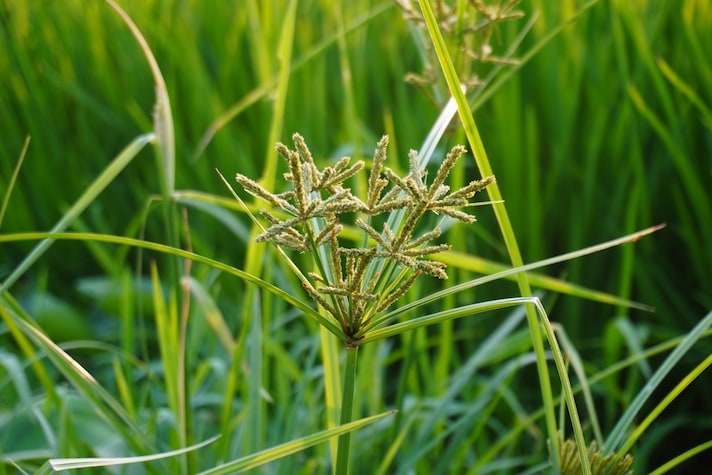
Cabbasisi. If you're a fan of Inspector Montalbano, you should be familiar with a Sicilian expression, uttered several times with ironic annoyance by Dr. Pasquano. With his literary genius, Andrea Camilleri transformed a Sicilian dialect term into a symbol, rooted in a colorful and authentic folk expression. But behind this word lies a fascinating story that unites language, culture, and above all, gastronomy. Because yes, cabbasisi aren't just a good-natured "swear word," they're also small, precious tubers, known for centuries and now rediscovered as a healthy and versatile food. Also known as ground almonds or tiger nuts, here you'll find everything you need to know about this delicious plant with a very pleasant flavor.
What Are Tiger Nuts?
Scientifically known as Cyperus esculentus, tiger nuts (or cabbasisi) are small edible tubers. Their flavor is sweet and reminiscent of almonds or hazelnuts. Their appearance is irregular and wrinkled, and they are very small. The etymology of the term cabbasisi reflects the connection between Sicily and the Arab world. The name derives from ḥabb ‘azīz (حَبّ عَزيز) and means "precious seed." This explains why these tubers were considered a small delicacy, a gift from the earth to be protected and savored. In Pantelleria, this tuber is quintessentially associated with acorns, hence the rhetorical figure used by Camilleri in his work.
Origin and Cultivation
When we talk about earth almonds, we're not referring to a recent discovery: they have deep roots in human history. Many historians report numerous finds in Egyptian tombs that date their use as a food back over 4,000 years. They are considered such a precious food that they were even offered to the deceased as nourishment for the afterlife. Over time, tiger nuts traveled throughout the Mediterranean thanks to the Arabs, who favored their spread both in Sicily and Spain, where they are known as "chufa." It's no coincidence that even today, the city of Valencia is considered the world capital of chufa.

In Italy, cultivation is protected by a DOP (Protected Designation of Origin), guaranteeing quality and authenticity. Even today, most ground almonds come from the Iberian Peninsula, destined for an almost exclusive global market: in the Valencia region, the Consejo Regulador de Valencia (Regulatory Council of Valencia) has even been established, a sort of consortium regulated by the Spanish Crown. This plant grows in humid areas such as marshes and small bodies of water near the sea. It thrives in tropical and subtropical climates, which is why sweet almonds are a typical Valencian product, with the perfect climate for their growth. The Cyperus esculentus plant has thin green stems and very long, thin leaves (similar to chives), while underground it develops its characteristic tuber. They are planted in spring to encourage growth in the summer, thanks to the sun. When the leaves dry in autumn, the tiger nuts are harvested, which are then washed, dried, and preserved.
How Are They Used in Cooking
Tiger nuts are surprisingly versatile in the kitchen. In Spain, they're the main ingredient in the famous horchata de chufa, a cool, milky drink (similar to plant-based milk) enjoyed iced on hot summer days. In Italy, as we mentioned, they've remained a more niche product. In some areas of Sicily and Calabria, they're eaten raw or as a natural, sweet-tasting snack. They're eaten like walnuts or hazelnuts and are ideal as a snack to stave off hunger.

Tiger nuts, however, have a potential that goes far beyond all this: they can be used to make flour that is gluten-free, naturally sweet, and perfect for desserts, biscuits, creams, and specialty breads. As in Spain, they can be used to make some plant-based drinks similar to almond milk, or in traditional desserts and ice creams, replacing almonds or hazelnuts.
Properties and Benefits
Not only are they delicious and sweet, but tiger nuts are also excellent for your health. As we mentioned earlier, they're gluten-free and lactose-free, making them ideal for those with food intolerances.

They contain a very high percentage of fiber, which promotes a feeling of satiety and regulates the intestines. Rich in unsaturated fats, similar to those in olive oil, which are good for the heart and circulation, they provide essential minerals such as potassium, magnesium, iron, and phosphorus.
Also ideal in natural cosmetics, they are used for chufa oil: a rich and hydrating product from which creams, soaps and emulsions are obtained to combat dry skin.
;Resize,width=767;)
